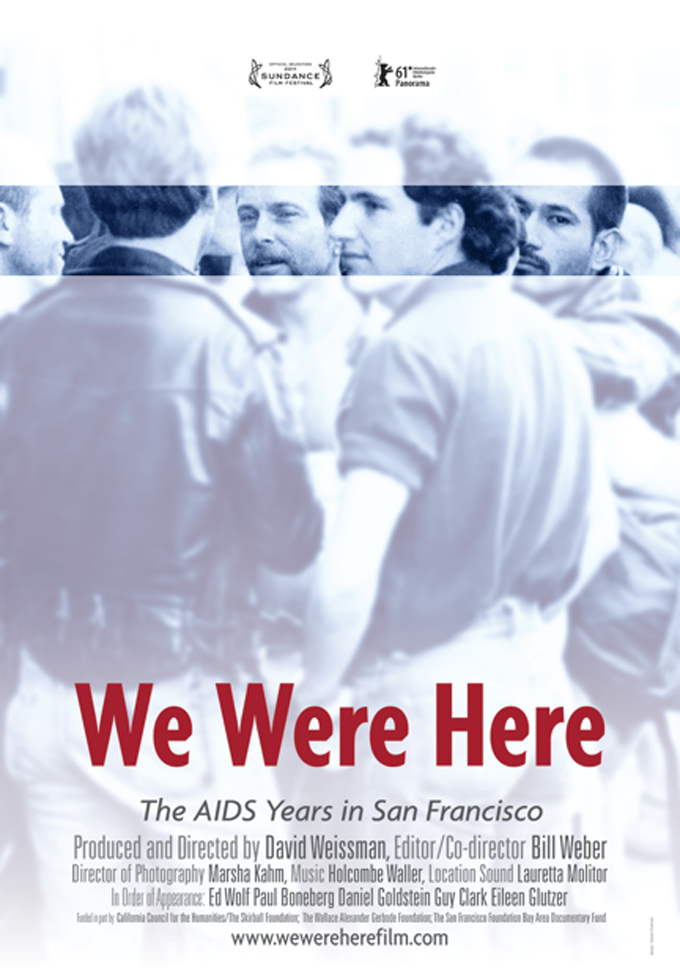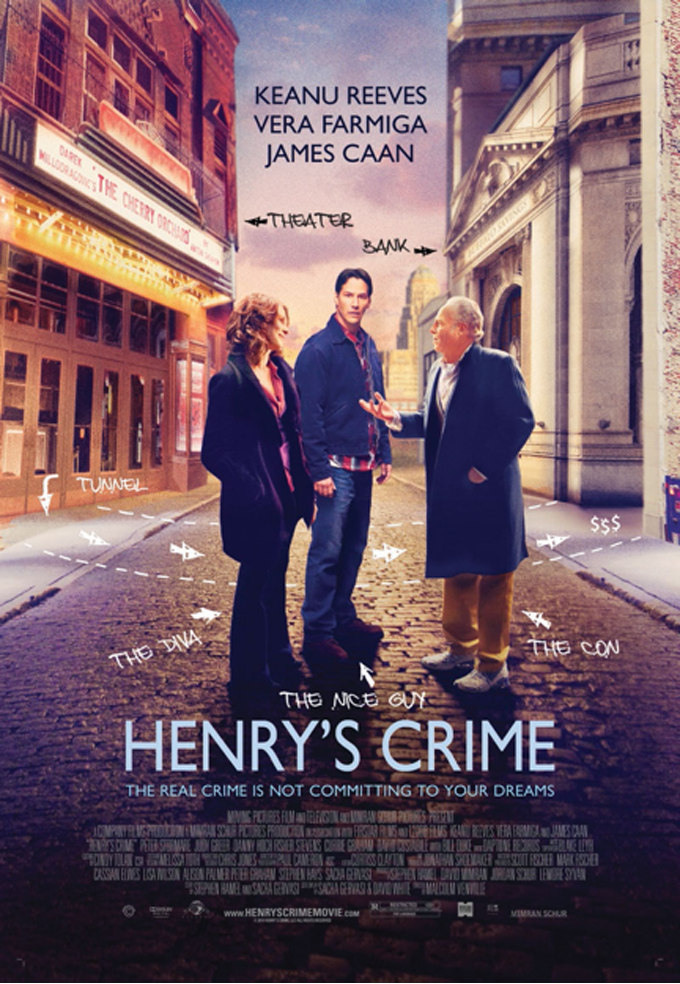Karen Robson and Steve Goodman of Pryor Cashman LLP have kindly provided us with a copy of an analysis they’ve written about the recent changes in securities laws because of the JOBS Act. It contains vital information about crowdfunding and how it relates to film — and is an important read for all filmmakers.
JOBS ACT TO HELP FILMMAKERS RAISE CAPITAL
By: Stephen M. Goodman, Karen M. Robson and David E. Parsly
May 2012
NOTE: This is a general analysis of the statute and should not be considered legal advice.
On April 5, 2012, President Obama signed into law the Jumpstart Our Business Startups Act (the “JOBS Act”). The JOBS Act encompasses a series of proposals that emerged in Congress over the past year, and that were ultimately brought together in a single piece of legislation receiving substantial bipartisan support. The stated purpose of the JOBS Act is to stimulate job growth and capital formation by removing and/or reducing certain costs and regulatory burdens applicable to smaller companies.
Specifically of interest to independent filmmakers, the JOBS Act introduces reforms to a certain widely, used private offering rule to remove the prohibition on “general solicitation” and creates a new exemption for “crowdfunding”, which, when rules mandated by the JOBS Act are finally adopted by the Securities and Exchange Commission (the “SEC”) in approximately nine months, will offer the potential to raise money through small investments from a larger number of investors.1 Since rulemaking related to the elimination of the general solicitation rules in private offerings must be completed within 90 days, this exemption will have a more immediate impact than crowdfunding on capital formation for filmmakers.
ELIMINATION OF “GENERAL SOLICITATION” RESTRICTIONS ON RULE 506 OFFERINGS
Private securities offerings under Regulation D promulgated under the Securities Act of 1933, as amended (the “Securities Act”), are frequently used by filmmakers to raise capital through the issuance of equity or debt securities. Regulation D offerings are exempt from registration under the Securities Act, which eliminates the substantial burdens and expenses associated with public registration and reporting. The most popular exemption used for domestic private placements is Rule 506 under Regulation D, because the amount that can be raised under Rule 506 is virtually unlimited and, so long as the offering is made only to “accredited investors” (i.e. generally investors that meet certain minimum annual income or net worth requirements), the number of investors is likewise (at least theoretically) unlimited.
However, issuers relying on Rule 506 have been prohibited from engaging in any form of “general solicitation or advertising” to attract investors. The SEC has never precisely specified what constitutes a “general solicitation,” but the SEC has cautioned in no, action letters that to avoid a general solicitation an issuer must approach only investors with whom the issuer has a “pre,existing substantive relationship.”2 Over the last several years, many commentators have noted the deleterious effects on issuer’s capital raising created both by this “general solicitation” limitation and by the vagueness and apparent internal contradiction in its interpretation.
Title II of the JOBS Act amends the Securities Act to specifically permit general solicitation or general advertising in connection with a Rule 506 private placement, so long as everyone who eventually makes an investment is an “accredited investor”. The intended result is to permit issuers, such as companies formed to finance and produce films, to reach a broader pool of potential investors, regardless of whether they have a pre,existing relationship with the issuer.
It is important to remember, however, that the ultimate investors must be “accredited investors”, and here the rules have changed slightly. The JOBS Act mandates that issuers relying on Rule 506 must now take “reasonable steps” to verify that each investor constitutes an “accredited investor” as defined in the Securities Act. At the least, this means that an issuer will no longer be able to rely on an unsupported representation by the purchaser that the purchaser is an accredited investor. Therefore, while the JOBS Act provides filmmakers the ability to cast a wider net and attract any accredited investor by means of a general solicitation, it will likely also place additional burden and expense on filmmakers to conduct some level of diligence on their investors to prove that they are accredited. The changes to the law also leave unanswered what methods or content the SEC will permit (or require) to be used in connection with a “general solicitation” and how activities conducted in connection with general solicitations may affect other fundraising efforts by issuers.
Despite these uncertainties, the removal of the general solicitation prohibition may provide filmmakers the ability to seek direct access to potential investors. Depending on SEC rulemaking regarding general solicitation, it may in some cases mitigate the need for filmmakers to rely on intermediaries such as brokers, placement agents and finders to introduce investors and to bear the financing fees associated therewith.
CROWDFUNDING
In recent years, films and other art and charitable projects have used Internet “crowdsourcing” donations to raise revenue. Instead of donations, “crowdfunding” would permit companies to take in small amounts of money as investments from numerous individuals. Websites such as Kickstarter and Indiegogo have previously acted as crowdsourcing portals based on a donation model. The JOBS Act responds to a growing belief among many politicians and business people that entrepreneurs should be able to use this model in an investment context.
Title III of the JOBS Act adds a new “crowdfunding” offering exemption to the Securities Act. The exemption is available to film producers and other issuers if the aggregate amount of all securities sold to investors by the production entity and its affiliates during the 12,month period prior to the latest transaction (including but not limited to any crowdfunding securities) does not exceed $1,000,000. The crowdfunding exemption restricts the aggregate amount that may be sold to any investor by the issuer during this 12,month period to either $2,000 or five percent of the investor’s annual income or net worth (if his or her annual income or net worth is less than $100,000) or ten percent of the investor’s annual income or net worth (if his or her annual income or net worth is $100,000 or more). In the latter case, the maximum aggregate amount that can be sold to the investor during the 12,month period is $100,000.
Both the overall limitation on the aggregate amount of securities that can be offered in the 12 months prior to the offering date and the caps expressed in the limitations on individual investors include not only securities sold pursuant to the crowdfunding exemption during those 12 months but also any other securities of the issuer purchased by that investor without regard to the 12,month period. This means, for example, that if a producer has raised $500,000 in a Rule 506 private placement, then for the next 12 months it cannot raise more than $500,000 in a crowdfunding offering.
However a filmmaker seeking to rely on the new crowdfunding exemption will not be able to simply post its offering on a website and accept offered cash. Rather, there will be a significant number of requirements on the manner of offering the securities and the types of information that must be made available to investors, the SEC and state regulators, as well as requirements for updating the information during the offering and after the offering is completed.
Perhaps most significantly, the JOBS Act requires that any crowdfunding offer be conducted through a registered broker or “funding portal”3, not directly by the production entity itself. To satisfy the JOBS Act’s requirements that the broker take responsibility for the crowdfunding offering, the broker is required to:
• provide various disclosures, including disclosures relating to risks, and other investor education materials (to be prescribed by SEC rule);
• ensure that each investor (a) reviews these disclosures and materials (in accordance with standards to be established by the SEC), (b) affirms that the investor understands the risk of potential loss of the entire investment and that the investor can bear the loss and (c) answers questions demonstrating that the investor understands the risks of start,up investing, illiquidity of the investment and “such other matters as the SEC determines by rule”;
• take measures (to be established by the SEC) to reduce the risk of fraud, including obtaining a background check and securities enforcement history on each officer and director of the production entity and each person holding more than 20 percent of that entity’s securities;
• make certain information required to be provided by the production entity (see below) available to the SEC and to potential investors at least 21 days prior to the first sale of securities;
• ensure that proceeds are only released to the production entity after a target offering amount is reached and allow for investors to cancel their commitments (as determined by SEC rule);
• verify (to the extent deemed necessary by the SEC) that no investor has exceeded the limits on aggregate investment in the production entity required by the exemption (see below);
• protect the privacy of information collected from investors (to the extent determined by SEC rule);
• not compensate any finder, promoter or others for providing “personal identifying information” of any potential investor;
• prohibit its own directors, officers orpartners from having any financial interest in the production entity; and
• meet such other requirements as the SEC may deem appropriate for the protection of investors.
To rely on the new crowdfunding exemption, the production entity must also comply with a number of disclosure and offering requirements. In particular, the production entity must:
• file extensive disclosure with the SEC and provide to the investors and the relevant broker or funding portal information regarding (1) its name, address and website address; (2) the names of its directors and officers and each person holding more than 20 percent of its shares; (3) its business and its anticipated business plan; (4) its financial condition4; (5) the stated purpose and intended use of the proceeds of the offering; (6) the target offering amount, the deadline to reach the target amount and “regular updates” on the progress of the offering; (7) the price (or the method for determining the price) of the securities offered and a reasonable opportunity to rescind the purchase commitment if the final price is not determined at the time the commitment is made; (8) a description of the ownership and capital structure of the production entity and the terms of the offered securities (including how the offered securities have been valued and the risks of being a minority owner); and (9) such other information as the SEC may require;
• not advertise the terms of the offering, other than to direct investors to the funding portal or broker;
• not compensate anyone to promote the offering unless the person clearly discloses the receipt of compensation in connection with any such promotional communication (pursuant to rules to be adopted by the SEC);
• file at least annually with the SEC (and provide to investors) reports of the results of operations and financial statements (as specified by SEC rule); and
• comply with such other requirements as the SEC may prescribe.
The SEC has been given 270 days to promulgate rules and regulations clarifying the crowdfunding exemption.
The information required to be made available by the issuer as described above is also to be made available to any state securities agency. Securities issued in a crowdfunding offer are exempt from certain state “blue sky” requirements except that notice filings may be required in the state where the principal place of business is located or where purchasers of 50% or more of the offering are residents.
The production entity accepting the investment remains liable for material misstatements and omissions in information provided in a crowdfunding offer. Securities purchased in a crowdfunding transaction may not be transferred by the purchaser for one year following the date of purchase except to the production entity itself, to an accredited investor, as part of a resale registration statement filed with the SEC, to a “member of the family of the purchaser or the equivalent” or, in the discretion of the SEC, in connection with the death or divorce or other similar circumstance affecting the purchaser. Finally, the JOBS Act provides that purchasers who acquire securities in a crowdfunding transaction will not be included in calculating the number of record holders that an issuer may have before it is required to make public disclosures under the federal securities laws.
Due to the 270 day period for the SEC to implement crowdfunding rules, filmmakers will be forced to take a wait and see approach on what the impact of crowdfunding will be on the film financing industry. The costs associated with engaging a funding portal remain unknown, as well as the full extent of legal and other professional assistance that will be required. In light of the $1 million cap on the amount of crowdfunding offerings permitted per year and the recordkeeping and other potential burdens associated with having a large number of micro investors, it is possible that crowdfunding may be less popular than some anticipate. Still, as Kickstarter and Indiegogo have proven in the context of donations, there are masses of previously untapped investors out there that the JOBS Act may now allow filmmakers to access.
If you have any questions or would like any further information about the JOBS Act or how Pryor Cashman can serve your legal needs, please contact the authors of this Legal Update or the Pryor Cashman attorney with whom you work.
1 On April 23, 2012, the SEC issued a notice reminding issuers that until the SEC adopts implementing rules any offers or sales of securities purporting to rely on the crowdfunding exemption would be unlawful under the federal securities laws.
2 See, e.g., Bateman, Eichler, Hill Richards, Inc. (pub. avail. Dec. 3, 1985); Lamp Technologies (pub. avail. May 29, 1997).
3 A funding portal is defined by a new Section 3(a)(80) of the Exchange Act as an intermediary involved specifically in the offer or sale of securities pursuant to Section 4(6) that does not (1) offer investment advice, (2) engage in solicitation of transactions in the offered securities, (3) compensate anyone for such solicitations or on the basis of sales of such securities, (4) handle investor funds or securities or (5) engage in any other activities that the SEC deems inappropriate. A funding portal is to be exempt from registration as a broker or dealer, but will nevertheless have to register with the SEC as well as with “any applicable self,regulatory organization”. It remains, however, subject to the examination, enforcement and other rulemaking activity of the SEC and such other requirements of the Exchange Act as the SEC deems appropriate and it must be a member of a national securities association registered under Section 15A of the Exchange Act (although the national securities association can only enforce rules adopted specifically for such portals).
4 Specifically, issuers using the exemption must provide the following financial information, depending upon the size of the offering: (a) income tax returns and financial statements certified as true and complete by the principal executive officer (if the aggregate offering amounts within the previous 12 months is $100,000 or less), (b) financial statements reviewed by an independent public accountant (if the aggregate offering amounts are between $100,000 and $500,000) or (c) audited financial statements (if the aggregate offering amounts are more than $500,000 (or such other amount as the SEC may establish)).
***
Copyright © 2012 by Pryor Cashman LLP. This Legal Update is provided for informational purposes only and does not constitute legal advice or the creation of an attorney-client relationship. While all efforts have been made to ensure the accuracy of the contents, Pryor Cashman LLP does not guarantee such accuracy and cannot be held responsible for any errors in or reliance upon this information. This material may constitute attorney advertising.
STEPHEN M. GOODMAN
Partner
Stephen M. Goodman is co-head of the Mergers and Acquisitions Practice at Pryor Cashman LLP. He has extensive experience representing companies in public offerings, private placements, and other complex financing and acquisition arrangements.
Mr. Goodman has also written on topics ranging from raising seed capital for entrepreneurial companies to the SEC’s whistleblower rules to the Supreme Court’s decision regarding material nondisclosure in Matrixx Initiatives, Inc. v. Siracusano, and has lectured on various aspects of capital formation at Columbia University, the City University of New York and the New York Academy of Sciences. His most recent article is “Still Room for Finders? Courts Question SEC View of Broker Activity” (BNA Securities Regulation & Law Report, November 14, 2011).
Mr. Goodman is a 1977 graduate of New York University School of Law, where he was Order of the Coif and Articles Editor of the Annual Survey of American Law.
KAREN M. ROBSON
Partner
Karen Robson has worked primarily in the Film Finance and Production practice of the Entertainment Group since 1986 and heads the Los Angeles office of Pryor Cashman LLP. Karen represents a variety of financiers, banks, equity investors, high,profile independent producers and production companies for which she structures film finance transactions and also provides production legal representation. She also represents individual writers, directors and producers in the motion picture and television areas.
For over twenty years, Karen has handled financing on multiple picture deals and single pictures, television mini,series and major documentaries. In recent years, Karen has represented both producers and lenders with respect to film financings which include senior and mezzanine debt and/or equity; international co,productions and U.S. tax incentivized financings.
Karen is also experienced in representing properties in the film, video, television and merchandising areas including properties in the family entertainment arena, including The Berenstain Bears, I Spy, a children’s television series featuring music artist Dan Zanes, and theatrical feature films based on a series of major children’s television and merchandising properties.
Prior to her career as an attorney, Karen had a brief career as a film actress in Australia, including a major role in Peter Weir’s cult favorite, Picnic at Hanging Rock.
DAVID E. PARSLY
Associate
David Parsly is an associate in the Corporate Group and represents public and private companies in a variety of general corporate matters, including corporate formation and governance, mergers and acquisitions, corporate finance, and securities issuance and compliance.
David is a 2007 graduate of the Benjamin N. Cardozo School of Law, and earned a B.A. from the University of Michigan in 2004. While in law school, David served as a judicial intern for the Honorable Richard B. Lowe III in the Commercial Division of the New York State Supreme Court, New York County.
www.pyorcashman.com








